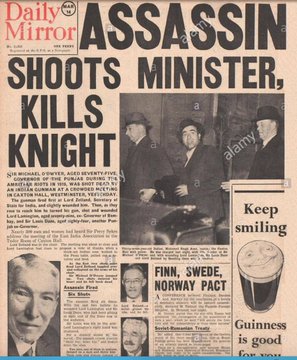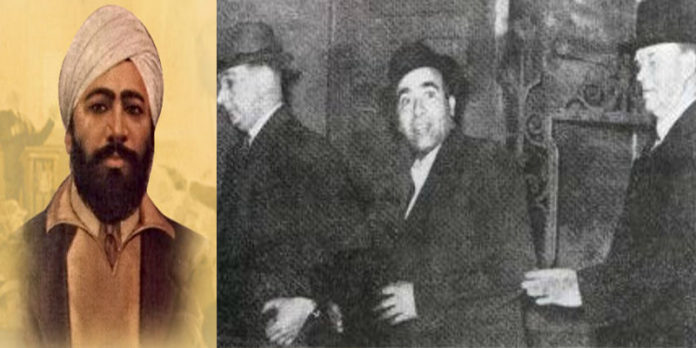Jallianwala Bagh Massacre – The most brutal killing of innocent people The Jallianwala Bagh Massacre was the result of brutal firing on innocent people, who had assembled in the Jallianwala Bagh for a peaceful protest against the arrest of various Freedom Fighters under the Rowlatt Act. The Jallianwala Bagh massacre was the result of the arrest of freedom fighters, Satya Pal and Saifuddin Kitchlew under the Rowlatt Act which was already facing a widespread protest from around India. This arrest added fuel to the fire, making people angrier.
The widespread anger of people scared the British government and the General Reginald Dyer, who was the head of British administration at that time, imposed a ban in public gatherings.

This is, however, one side of the story. The day of 13th April is the day of Baisakhi. Amritsar’s Jallianwala Bagh was famous for its Baisakhi Fair which many people from far off villages come to attend. Many outsiders who came to attend the much-celebrated fair, were unaware of the ban. When General Dyer got to know about this, he closed all the exits to the Jallianwala Bagh and opened fire on all the people present in the park, without any warning. Panic-stricken public caused a stampede, trying to run and save their lives by climbing the walls or jumping into the well. The British army kept on firing till they ran out of ammunition. The whole of the Jallianwala Bagh bathes in the blood of innocent people that way. Hundreds were killed and thousands were injured during this incident.
One of the man present during the Jallianwala Bagh massacre was Udham Singh, who got deeply scarred by what happened.
Udham Singh – How he became a freedom fighter:
Shaheed Udham Singh was 20 years old at the time of the massacre. After the Jallianwala Bagh incident, he got involved in the arms resistance movement that was unfolding all around the globe. In the early 1920s, he travelled to East Africa, where, after working as a labourer for a brief while, he made his way to the USA. There, in San Francisco, he came into the contact of the Ghadar Party. It was a revolutionary movement started by the immigrant Punjabi-Sikhs to gain India’s independence from the British. Udham Singh spent next few years of his life, travelling across America and securing support for their movement. He collaborated with many aliases such as Ude Singh, Sher Singh and Frank Brazil.
In 1927, he came back to Punjab. There he was arrested for the possession of illegal arms and for running the publication, Ghadr di Gunj. He was jailed for four years till 1931. During the four years he spent in jail, Brigadier-General Dyer died after suffering from a series of strokes. When Udham Singh was released in 1931, he was under close surveillance because of his close contact with Bhagat Singh’s Republicans, who by that time was hanged due to the Lahore conspiracy. He somehow managed to escape to Germany, after forming alliances with Kashmir.
Udham Singh and his Revenge :
Udham Singh reached England in 1933. His aim was to assassinate Michael O’Dwyer, who he held responsible for the brutal Jallianwala massacre. O’Dwyer had justified the massacre, calling it a “correct action”. In London, he made allies with socialist groups while working as a carpenter, mechanic and painter. Udham Singh appeared in movies as well. Udham Singh movies include Alexander Korda’s ‘Elephant Boy’ and ‘The Four Feathers’ in which he worked as an extra.
However, the freedom fighter, Shaheed Udham Singh didn’t forget his purpose. When he learnt that Michael O’Dwyer will speak at a meeting in London’s Caxton Hall on March 13, 1940. He sneaked into the hall that day with a revolver sneaked in his jacket. He shot O’Dwyer twice as after the meeting concluded and he was ascending down the platform.
He was immediately taken into custody and did not try to flee or resist the arrest. During his trial, Udham Singh gave his name as Mohammad Singh Azad, which was also tattooed on his arm. It was a symbol, meaning that all religions in India were united in their efforts against the British rule.
He was sentenced to death and was hanged on July 31, 1940 at London’s Pentonville Prison. Udham Singh was buried there in the prison grounds. In 1974, Shaheed Udham Singh’s remains were exhumed and returned to India before being cremated at his birthplace, Sunam village in Punjab. Today, there is a place known as Udham Singh Nagar in Uttarakhand which is named after the braveheart who sacrificed his life to avenge the Jallianwala Bagh Massacre.


















































